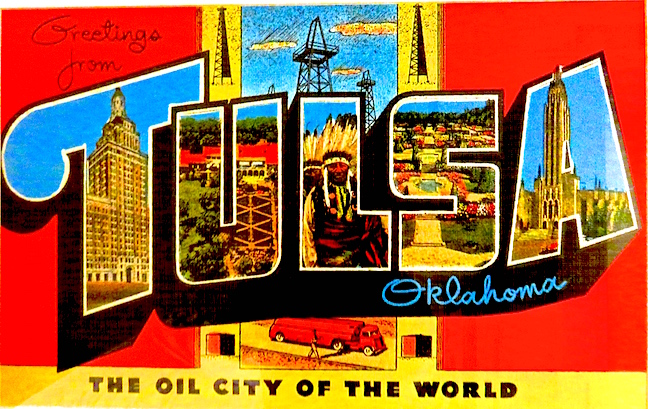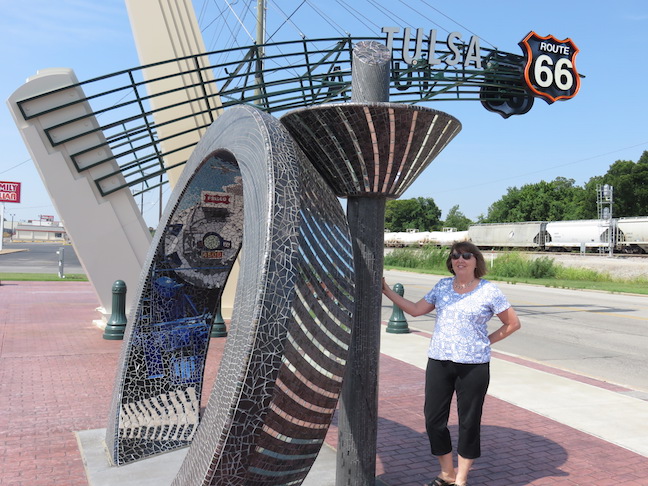Karen and I arrived in Tulsa, Oklahoma at 9:30pm, Friday (8-3-18) after a flight delay. A large part of the town had rolled up the sidewalks, but it was “First Friday” and the Brady Arts District was jammed to overflowing with happy Okies ready to party into the weekend. We were directed to McNellie’s Public House for dinner. Not only was their version of Shepherd’s Pie scrumptious, they offered hundreds of local craft and international beers.
The streets were bustling as we walked into the warm night from McNellie’s. The Tulsa Drillers minor league baseball team was just finishing a win over the Arkansas Travelers and an impressive fireworks show lit up the darkness above ONEOK Field a block away.

Saturday morning we embarked on a whirlwind tour of Tulsa’s most intriguing sights. We began at The Center of the Universe on a footbridge over the railroad tracks. Standing on the metal disc in the middle of a round, brick inlay a person can speak, sing or shout and hear their voice as if it were amplified. Nobody watching this spectacle can hear the phenomena, which makes for some confused onlookers.
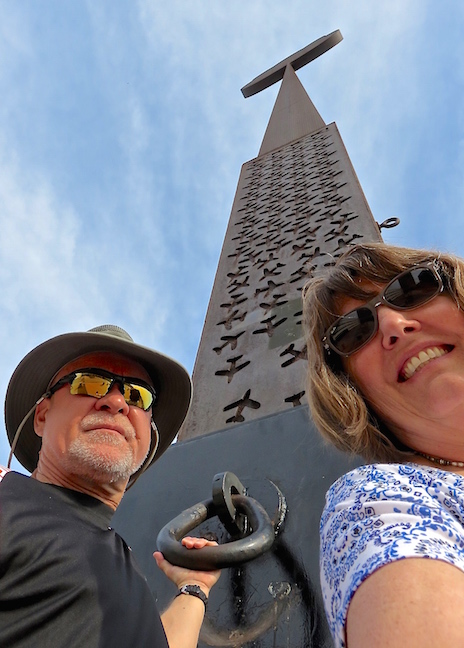
Near the Center of the Universe is an odd statue Robert Haozous named Artificial Cloud. The airplanes depicted in crashing mode and the giant, iron knockers make interpreting this artwork a challenge.
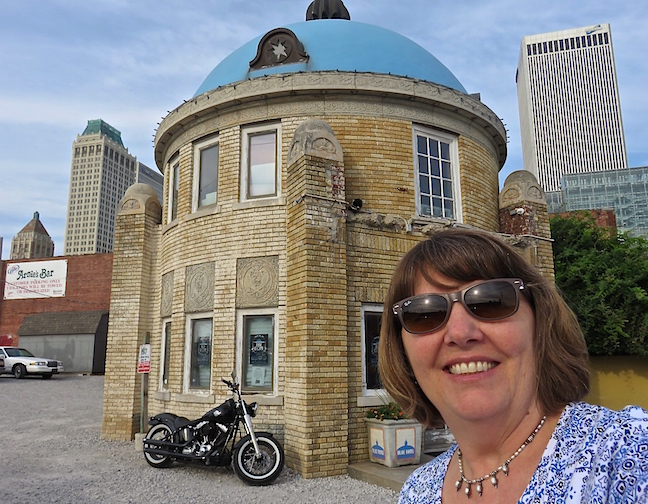
The Blue Dome was moved from Route 66 to 11th Street and anchors an entertainment district. It was Tulsa’s first 24-hour gas station.

“The King of Western Swing,” Bob Wills, was born in Texas, but he often played on Tulsa’s KVOO radio station in the 1930s. Tulsa’s past is connected to Texas, whether Okies like it or not.
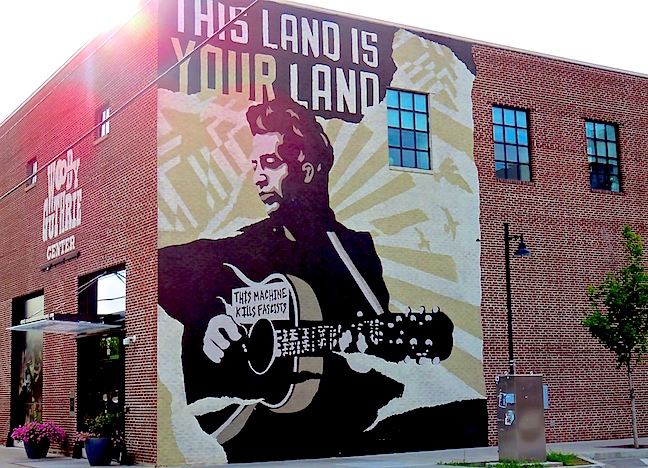
Woodrow Wilson Guthrie was born in Okemah, Oklahoma. His cutting edge, political, folk songs are still as inspirational as they were in the 30s and 40s. The Woody Guthrie Center brings his legacy to Tulsa.
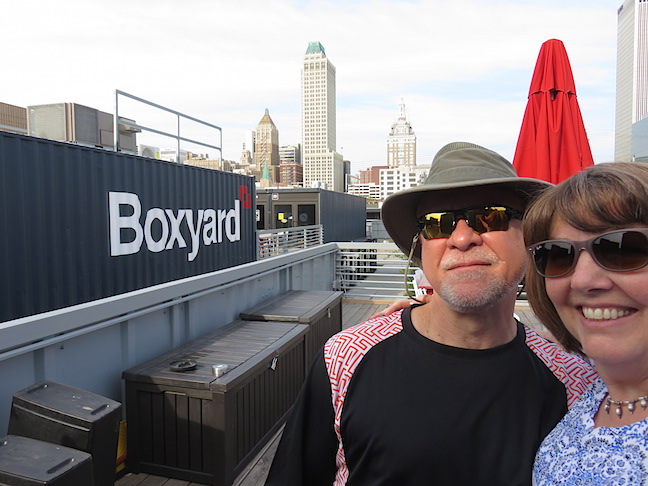
Constructed with 39 shipping containers that traveled around the world for 8-12 years, the Boxyard is one of Tulsa’s most unique shopping centers. The average store size is 320-640 square feet.
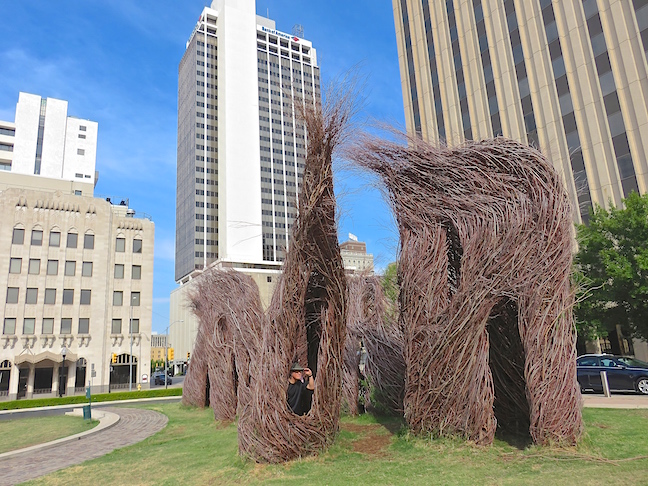
Sailing through Centennial Green in downtown Tulsa are Patrick Dougherty’s “Prairie Schooners.” The artist and volunteers created the “stick work” exhibit in three weeks.

We passed The Buckaneer leaving downtown. We did not get to investigate its claim to be Tulsa’s oldest bar, but the outside, dive vibe was as cheesy as the Okie spelling. It reminded me of the old joke: “What did the pirate charge for his corn? A buck-an-ear.”
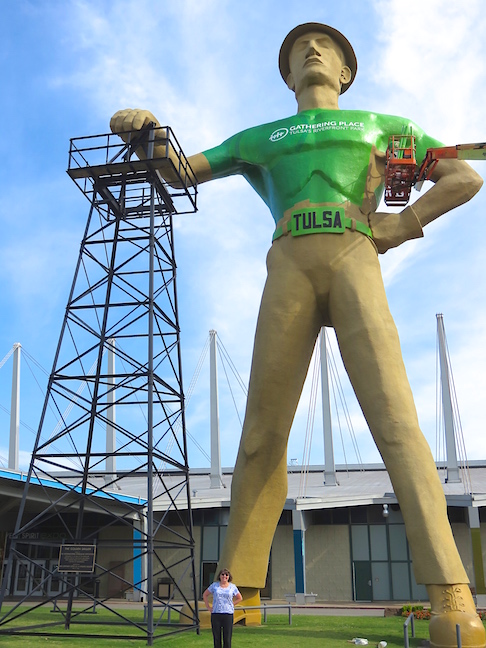
The Golden Driller stands guard in front of the Tulsa County Fairgrounds. Weighing in at 43,500 pounds and 76-feet high makes it one of the tallest freestanding statues in the US. It was built by Mid-Continental Supply of Texas for the 1953 International Petroleum Exposition and has survived harsh weather and countless bullet holes. The Ladies’ Baptist League had the big man’s bulge neutered and lobbied for a shirt to make him less offensive.
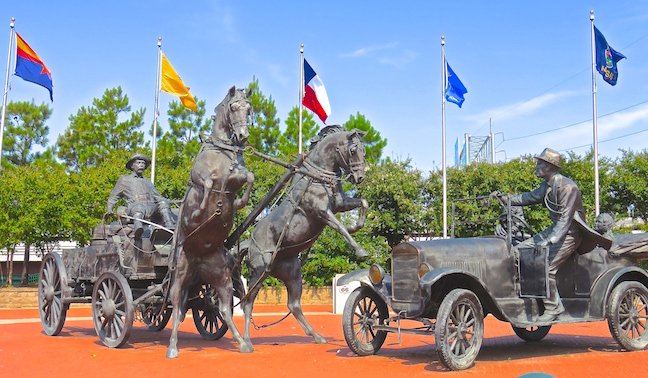
Commemorating the dominance of the “Tin Lizzie” over horses made this sculpture a natural for the vintage motorway.
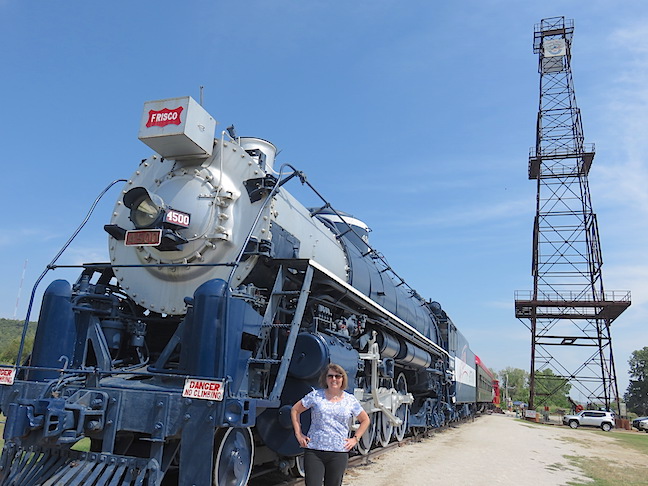
In 1901 the Red Fork Gusher, across the Arkansas River from Tulsa, started the events that made Tulsa the “Oil Capital of the World.” This 1950s derrick was dedicated during Oklahoma’s 2007 centennial.
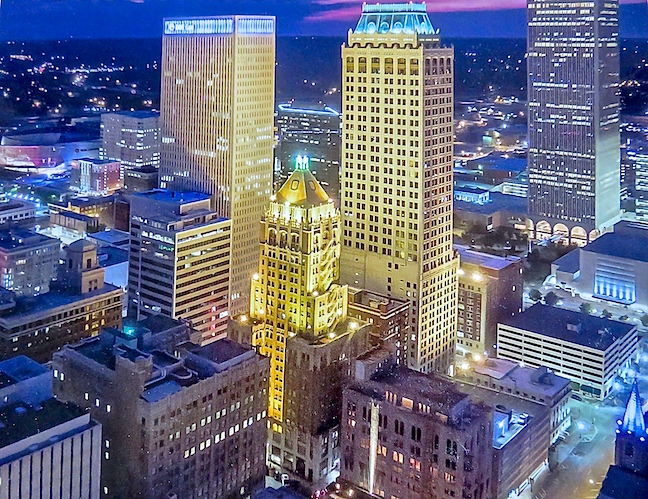
Tulsa turned out to be far more interesting and fun than we imagined. The Oil boom beacon is a star in Oklahoma’s crown.

